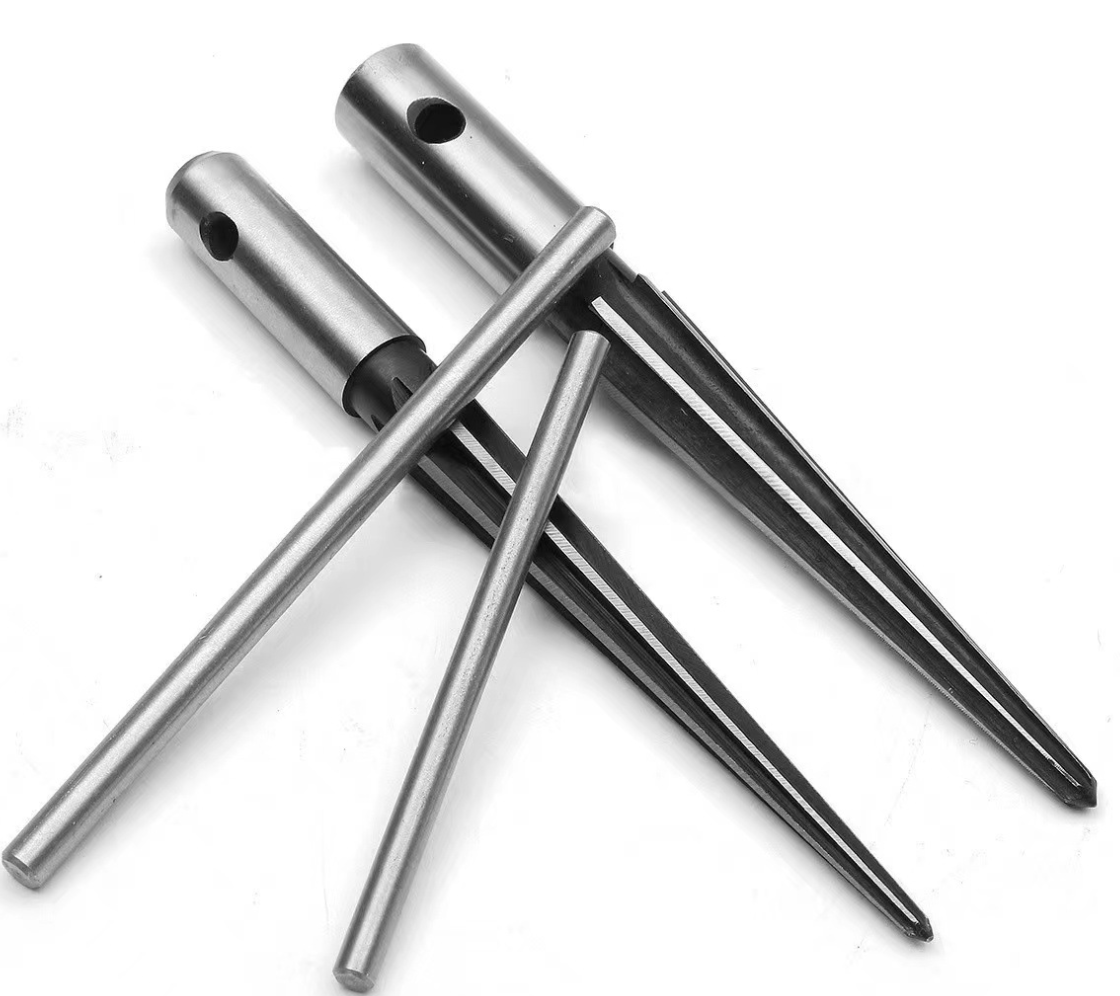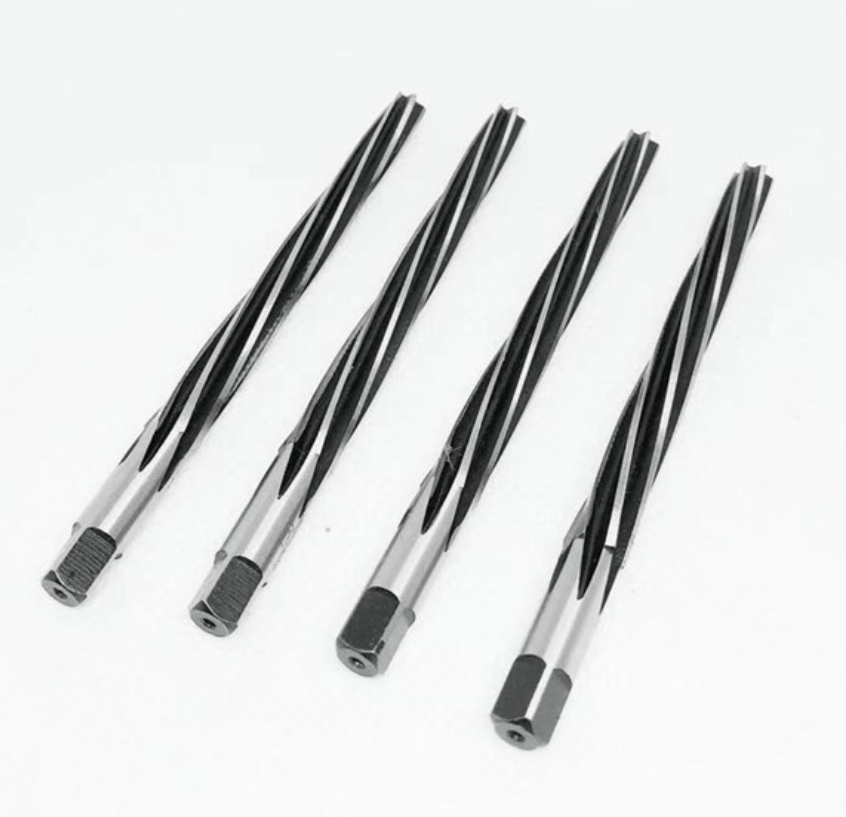COMPANY NEWS
《 BACK LIST
10 Common Problems and Solutions for Deep Hole Processing
1. Increased aperture, large error
Causes: The design value of the reamer outer diameter is too large or there are burrs on the reamer cutting edge; the cutting speed is too high; the feed rate is improper or the machining allowance is too large; the reamer main deflection angle is too large; the reamer is bent; the chip tumor adheres to the reamer cutting edge; the swing difference of the reamer cutting edge is too large during grinding; the cutting fluid is not selected properly; the oil on the surface of the taper handle is not wiped clean when installing the reamer or the taper surface is bumped; the flat tail of the taper handle is offset and the taper handle cone interferes after being installed in the machine tool spindle; the spindle is bent or the spindle bearing is too loose or damaged; the reamer is not flexible in floating; the reamer is not coaxial with the workpiece and the force of both hands is uneven when reaming by hand, causing the reamer to shake left and right.
Solution: Reduce the outer diameter of the reamer appropriately according to the specific situation; reduce the cutting speed; adjust the feed rate or reduce the machining allowance appropriately; reduce the main deflection angle appropriately; straighten or scrap the bent and unusable reamer; carefully trim it with an oil stone to meet the requirements; control the swing error within the allowable range; choose a cutting fluid with good cooling performance; before installing the reamer, the reamer taper shank and the internal oil stains of the machine tool spindle taper hole must be wiped clean, and the taper surface must be polished with an oil stone; grind the flat tail of the reamer; adjust or replace the spindle bearing; readjust the floating chuck and adjust the coaxiality; pay attention to correct operation.
2. Aperture reduction
Causes: The design value of the reamer outer diameter is too small; the cutting speed is too low; the feed rate is too large; the main deflection angle of the reamer is too small; the cutting fluid is not selected appropriately; the worn part of the reamer is not ground off during sharpening, and the elastic recovery reduces the aperture; when reaming steel parts, the allowance is too large or the reamer is not sharp, which is easy to produce elastic recovery, which reduces the aperture and makes the inner hole non-round, and the aperture is unqualified.
Solution: Change the outer diameter of the reamer; increase the cutting speed appropriately; reduce the feed rate appropriately; increase the main deflection angle appropriately; select oily cutting fluid with good lubrication performance; regularly interchange the reamers and correctly sharpen the cutting part of the reamer; when designing the reamer size, the above factors should be considered, or the value should be taken according to the actual situation; make trial cutting, take the appropriate margin, and sharpen the reamer.

3. The inner hole reamed is not round
Causes: The reamer is too long, the rigidity is insufficient, and vibration occurs during reaming; the main deflection angle of the reamer is too small; the reaming cutting edge is narrow; there are notches and cross holes on the surface of the inner hole; there are sand holes and air holes on the surface of the hole; the spindle bearing is loose, there is no guide sleeve, or the clearance between the reamer and the guide sleeve is too large, and the thin-walled workpiece is clamped too tightly, and the workpiece is deformed after removal.
Solution: For reamers with insufficient rigidity, unequal pitch reamers can be used. The installation of reamer should adopt rigid connection to increase the main deflection angle; select qualified reamer to control the hole position tolerance of pre-processing process; use unequal pitch reamers and use longer and more precise guide sleeves; select qualified blanks; when using equal pitch reamers to ream more precise holes, the machine tool spindle clearance should be adjusted, and the matching clearance of the guide sleeve should be required to be higher or use appropriate clamping methods to reduce the clamping force.
4. The inner surface of the hole has obvious edges
Causes: The reaming allowance is too large; the back angle of the reamer cutting part is too large; the reaming cutting edge band is too wide; there are pores and sand holes on the workpiece surface and the spindle swing is too large.
Solution: Reduce the reaming allowance; reduce the back angle of the cutting part; grind the edge band width; select qualified blanks; adjust the machine tool spindle.
5. High surface roughness of inner hole
Causes: Cutting speed is too high; cutting fluid is not suitable; main deflection angle of reamer is too large, reaming cutting edges are not on the same circumference; reaming allowance is too large; reaming allowance is uneven or too small, and local surface is not reamed; reamer cutting part swing error is out of tolerance, cutting edge is not sharp, and surface is rough; reaming cutting edge is too wide; chip removal is not smooth when reaming; reamer is over-worn; reamer is damaged, burrs or chipping are left on the cutting edge; there is built-up edge on the cutting edge; due to material relationship, it is not suitable for zero-degree rake angle or negative rake angle reamer.
Solution: Reduce cutting speed; select cutting fluid according to the processing material; appropriately reduce the main deflection angle, correctly sharpen the reaming cutting edge; appropriately reduce the reaming allowance; improve the position accuracy and quality of the bottom hole before reaming or increase the reaming allowance; select qualified reamer; sharpen the width of the blade band; reduce the number of reamer teeth according to the specific situation, increase the chip groove space or use a reamer with a blade inclination angle to make chip removal smooth; regularly replace the reamer, and grind off the grinding area during sharpening; during sharpening, use and transportation of the reamer, protective measures should be taken to avoid bruises; for bruised reamers, use a very fine oil stone to repair the bruised reamer, or replace the reamer; use an oil stone to trim it to a qualified level, and use a reamer with a front angle of 5° to 10°.

6. Low service life of the reamer
Causes: Inappropriate reamer material; reamer burns during sharpening; inappropriate selection of cutting fluid, the cutting fluid fails to flow smoothly, and the surface roughness value of the cutting part and after sharpening the reamer is too high.
Solution: Select reamer material according to the processing material, carbide reamer or coated reamer can be used; strictly control the amount of grinding and cutting to avoid burns; often choose cutting fluid correctly according to the processing material; often remove chips in the chip groove, use cutting fluid with sufficient pressure, and achieve the requirements through fine grinding or grinding.
7. The position accuracy of the reamed hole is out of tolerance
Cause: wear of the guide sleeve; the bottom end of the guide sleeve is too far away from the workpiece; the guide sleeve is short in length, poor in accuracy, and the spindle bearing is loose.
Solution: Regularly replace the guide sleeve; lengthen the guide sleeve to improve the matching accuracy of the gap between the guide sleeve and the reamer; timely repair the machine tool and adjust the spindle bearing clearance.
8. Reamer tooth chipping
Cause: Too much reaming allowance; too high hardness of the workpiece material; too large cutting edge swing difference, uneven cutting load; too small main deflection angle of the reamer, which increases the cutting width; when reaming deep holes or blind holes, there are too many chips, which are not removed in time, and the teeth have been worn out during grinding.
Solution: Modify the pre-processed aperture size; reduce the material hardness or use a negative rake angle reamer or carbide reamer; control the swing difference within the qualified range; increase the main deflection angle; pay attention to timely removal of chips or use a reamer with an edge angle; pay attention to the quality of sharpening.

![]()
9. Reamer handle breakage
Cause: Too much reaming allowance; when reaming a taper hole, the rough and fine reaming allowance distribution and cutting amount selection are not appropriate; the reamer tooth chip space is small and the chips are blocked.
Solution: Modify the pre-processed aperture size; modify the allowance distribution and reasonably select the cutting amount; reduce the number of reamer teeth, increase the chip space or grind off one tooth of the tooth gap.
10. The center line of the hole is not straight after reaming
Causes: The drill hole is tilted before reaming, especially when the hole diameter is small, because the reamer has poor rigidity and cannot correct the original curvature; the main deflection angle of the reamer is too large; the guide is poor, so that the reamer is easy to deviate from the direction during reaming; the back taper of the cutting part is too large; the reamer is displaced in the gap in the middle of the intermittent hole; when reaming by hand, too much force is applied in one direction, forcing the reamer to deflect to one end, destroying the verticality of the reaming hole.












